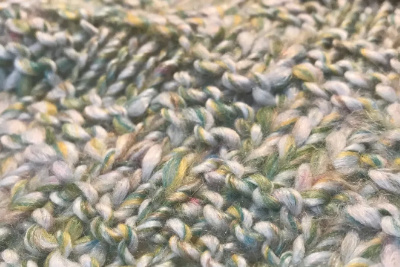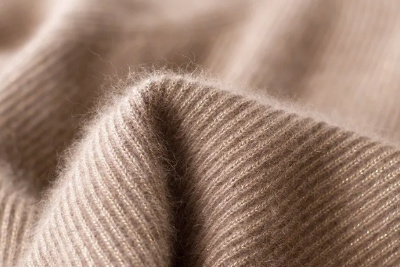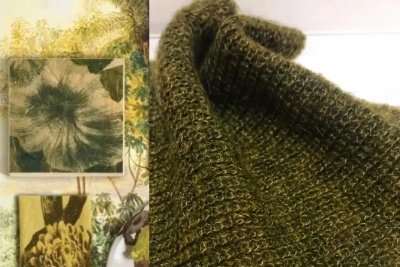
STANDARD 100 by OEKO-TEX updates 2020 testing standards
OEKO-TEX® International Environmental Protection Textile Association has been devoted to the detection of harmful substances in textiles for many years in order to realize consumers' pursuit and desire for a healthy life.
Release time:
2023-01-10
OEKO-TEX® International Environmental Protection Textile Association has been devoted to the detection of harmful substances in textiles for many years in order to realize consumers' pursuit and desire for a healthy life. The STANDARD 100 by OEKO-TEX® standard was developed by the OEKO-TEX® organization based on advanced relevant scientific knowledge and technology. The standard sets strict rules and regulations on the limit values and inspection rules of hazardous substances in textiles. STANDARD 100 by OEKO-TEX® will update its existing certification service test standards and limit values almost every year, in line with consistent consumer protection and the sustainable development of textiles, after years of use promotion and continuous improvement, it has gained worldwide The acceptance and recognition of enterprises within the scope has the authority and credibility.
In January 2020, OEKO-TEX® issued a new version of the eco-friendly textile product certification standard. The standard will be officially implemented on April 1, 2020 after a four-month transition period. Which hazardous chemical limits have changed? The OEKO-TEX® joint founding agency Heinstein, Germany, will give you a detailed introduction to the new regulations in the 2020 test standards:
1. Redefine and tighten the limit
1. After monitoring, the limits of the originally monitored substances "nitrous and nitroso substances" are clearly defined in Appendix 4 and Appendix 6 of the new standard. In appendix 4 and appendix 6, the limit values of nitrous and nitroso substances in the category 4 product level have been tightened, and a new N-nitrosomethyl ethyl amine (CAS 10595-95-6) has been added .
1.1) Sub: Each content <0.5 mg / kg
1.2) Nitroso Substances: Total content 5 <mg / kg
2. The herbicide glyphosate and its salts have been monitored by the OEKO-TEX® Association for one year and finally included in the standard catalog:
2.1) Ordinary cotton: <5 mg / kg
2.2) Organic cotton: product grade 1 is <0.5 mg / kg, product grade 2nd, 3rd and 4th grades are <1 mg / kg
3. The heavy metals in textiles are easily absorbed by the human body when they come into contact with the human body, and the absorbed heavy metals will accumulate in the human skeleton, brain
Waiting. When the heavy metal accumulated in the human body exceeds a certain limit, it will cause huge harm to human health.
Appendixes 4 and 6 define the total content of harmful elements arsenic and mercury:
3.1) Total arsenic content: <100 mg / kg
3.2) Total mercury content: <0.5 mg / kg
4. In Appendix 4 of STANDARD 100, the total limit value of phthalates decreased from 1000 mg / kg to 500 mg / kg
All in all, stricter restricted substance requirements reduce the harm to the environment, employees and consumers of the company.In many cases, the limit value of STANDARD 100 exceeds national and international standards. It is a leader in consumer protection, not standing still. Due to the implementation of the few additional measures mentioned above, STANDARD 100 by OEKO-TEX® has covered the requirements of “REACH Annex XVII CMR legislation (EU Commission Regulation (EU) 2018/1513)” for CMR substances.
2. Appendices 5 and 7 add "monitored" substances:
1. In order to comply with the provisions of Article 68 of Appendix XVII of the REACH Regulation, STANDARD 100 by OEKO-TEX® Appendix 5 and Appendix 7 list the following substances as "monitored" substances:
1.1) 1H, 1H, 2H, 2H-perfluorodecane sulfonic acid (8: 2 FTS) and its salts (CAS 39108-34-4 or CAS 27619-96-1)
1.2) PFOA-related substances (Article 68 of Appendix XVII of REACH Regulation)
2. New aromatic amines
2.1) CAS 121-66-4: 2-amino-5-nitrothiazole
2.2) CAS 156-43-4:
2.3) CAS 615-50-9: 2-methyl-p-phenylenediamine
2.4) CAS 20265-97-8: p-methoxyaniline
2.5) CAS 91-95-2: 3,3'-diamino (3,3 ', 4,4'-biphenyltetramine)
3. Under the "Residual Surfactants, Wetting Agents" item in Appendix 4 and Appendix 6, 4-tert-phenol is added. Contact with 4-tert-phenol in human skin may cause allergies or inflammation, and repeated exposure to such products may even cause leukoplakia.
Other chemical substances (SVHC)
3.1) Multiple CAS: 2,3,3,3-tetrafluoro-2- (heptafluoropropoxy) propionic acid
3.2) Multiple CAS: tri (4-nonylphenol) phosphite branched and linear, if the content of nonylphenol exceeds 0,1%
3.3) CAS 98-54-4: 4-tertiary phenol
4. In the cultivation process of natural fiber crops, growers usually use different kinds of insecticides to kill insects, in order to achieve the purpose of increasing crop yields. The use of a large number of pesticides leads to residual pesticides in textile fiber raw materials, which poses a huge threat to human health.
Add the following pesticides:
4.1) CAS 97-23-4: Bacterium
4.2) CAS 115-32-2: dicofol
4.3) CAS 1897-45-6: Chlorothalonil
4.4) CAS 105024-66-6: flumethrin, [3- (4-fluoro-3-phenoxy-phenyl) propyl] dimethylsilane
4.5) CAS 731-27-1: Tolusulfame
4.6) CAS 63405-99-2: 4,6-dichloro-7- (2,4,5-trichlorophenoxy) -2-trifluoromethylbenzimidazole (DTTB)
4.7) CAS 137-42-8: Weibaimu
4.8) CAS 10605-21-7: Carbendazim
5. Colorants classified as carcinogens and prohibited: CAS 2465-27-2: C.I. Basic Yellow 2 (equivalent to C.I. Solvent Yellow 34, auramine hydrochloride CAS 492-80-8)
6. VOC and ethylene glycol:
6.1) CAS 1589-47-5: 2-methoxypropanol
6.2) CAS 629-14-1: 1,2-diethoxyethane
3. New substances or explanations in the standard list (Appendix 5 and 7)
1. Insecticide: CAS 115-29-7
2. Flame retardant: zinc borate CAS 1332-07-6, CAS 12767-90-7
3. Chlorotoluene: Please refer to Appendix 5 and Appendix 7 for details
The 2020 version of STANDARD 100 by OEKO-TEX® compared with the 2019 version of the standard, the number of monitored hazardous substances has increased significantly, the monitoring scope has been further expanded, and the requirements of the standard are getting higher and higher. In the world's trend of advocating nature and advocating green consumption, developed countries in Europe and America have issued a series of standards to strengthen the monitoring of toxic and harmful substances in ecological textiles. With the continuous improvement of Chinese consumers' consumption level and green health awareness, China's textiles will have huge development potential and space in terms of ecological safety certification.
Note:
Appendix 4: Routine investigation items (substances) and their limit value requirements, based on human ecological considerations, check whether the harmful substances contained in textiles will cause potential harm to human health and avoid negative effects on the human body. Appendix 5 is a compilation of individual substances in Appendix 4.
Appendix 6: Expansion of investigation items (substances) and their limit value requirements, more than investigation items (substances) in Appendix 4 and stricter limit value requirements, specially developed for companies that pay attention to "detoxification actions" to enhance the production process Level of environmental performance. Appendix 7 is a compilation of individual substances in Appendix 6.
Previous:
Latest Blog





